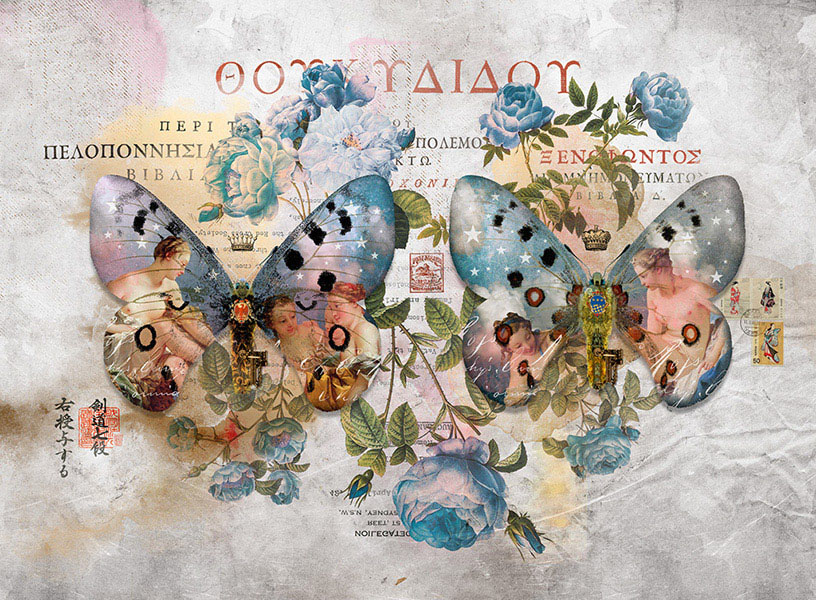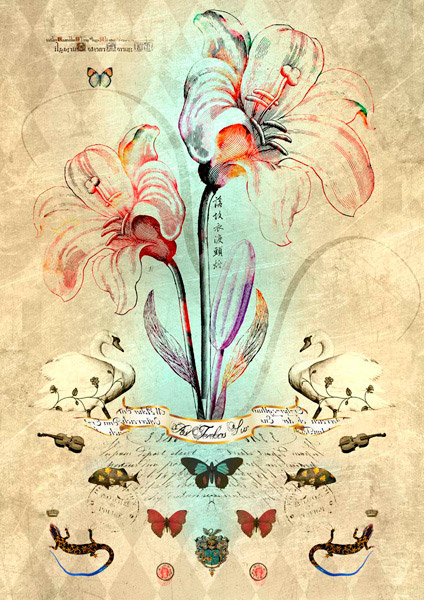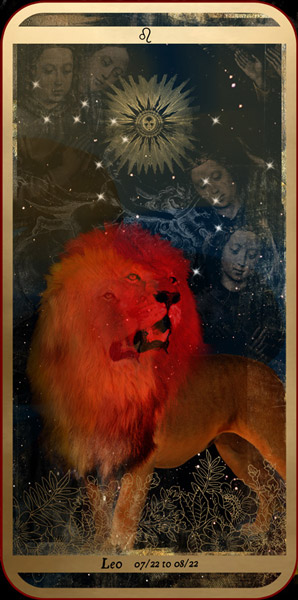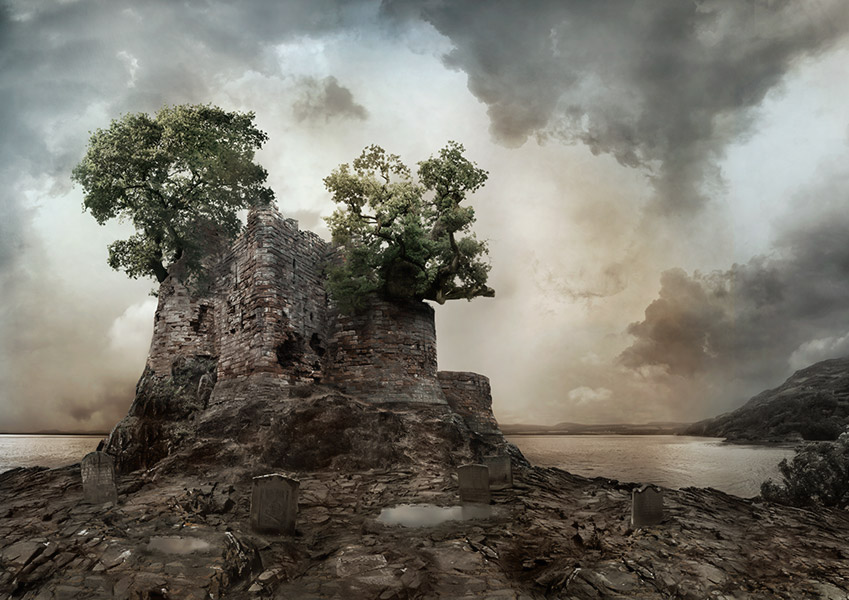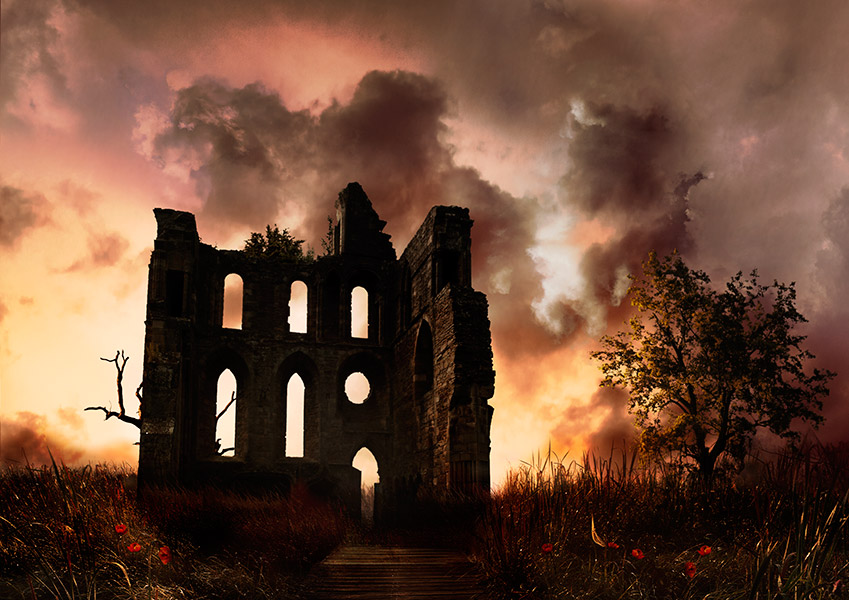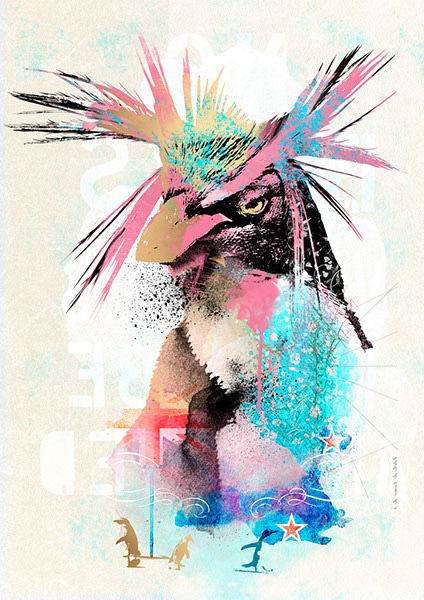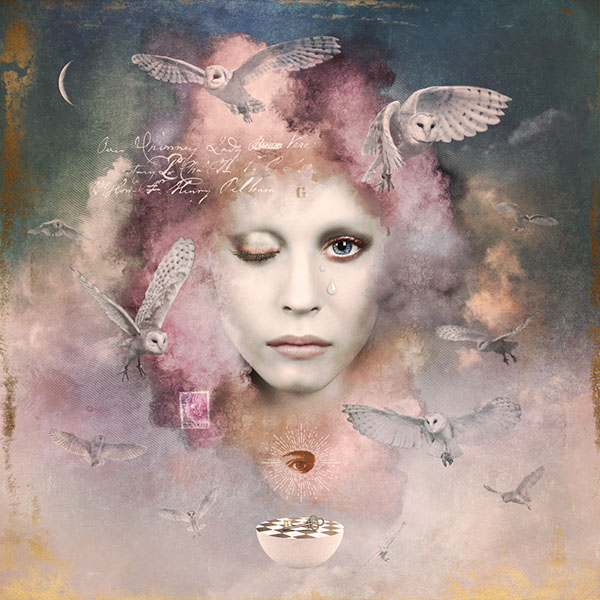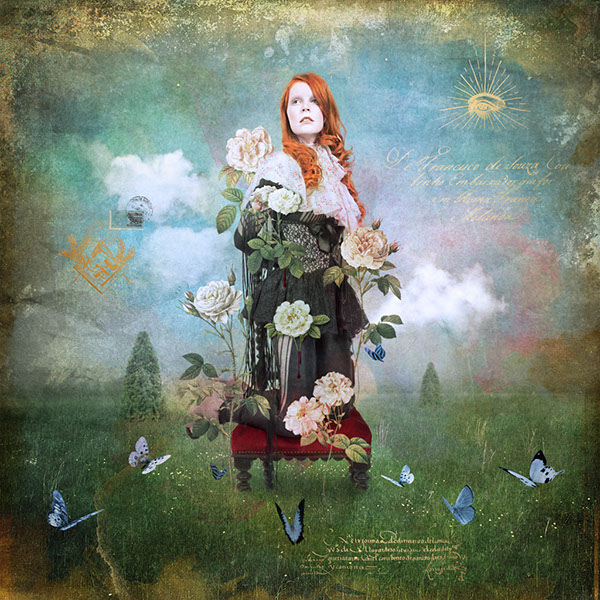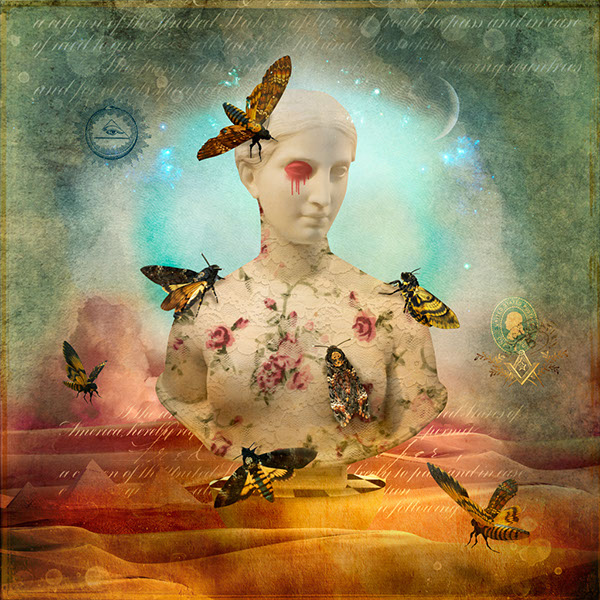André Sanchez
http://www.sanchezandre.com/
http://sanchezandre.tumblr.com/
INTERVIEW EYEMAZING MAGAZINE
Five short years ago, André Sanchez knew almost nothing about photography, and even less about fashion shoots. When he left his hometown of Bordeaux in 2005 to come to Paris, he was not even particularly obsessed about making a career in photography. He did, however, fall in love with the French capital and its architecture.
He began taking photos of everything he saw, capturing details of the buildings, objects and people he encountered on the city’s busy streets – faces, printed words, asphalt, wood, rust, leaves, mold…even ham. “A close up of a slice of ham adds incredible texture to a photomontage!” he laughs”. Soon he’d created an immense image bank. Through trial and error, André taught himself how to combine, superpose and transform these images on his computer. His baroque, multi-layered fashion shots and graphic art have appeared in books, magazines and newspapers in France, UK, Australia, Sweden, and the US. Today, his mind is in a continual creative whirlwind at the thought of the infinite number of compositions still waiting to be made. All of his free time – he holds a day job managing a shoe store – is spent working on new ideas. “I spend hours and hours on my art. Sometimes I can stop thinking about it”. He shrugs and smiles: “Sometimes it’s almost too much!”.
Engagingly modest and down-to-earth, André spoke to Eyemazing in Paris over a Perrier (no pictures taken of the bubbles) about his inspiration and aspirations.
Barbara Oudiz : For a total newcomer to Paris and to photography, you have come quite a way in a short time. How did you get the ball rolling?
André Sanchez : When I was just starting to make photomontages, a friend of mine saw them and suggested I put them on the web. The newspaper “Le Monde” saw my site and asked me to do a portrait of a scientist working on artificial intelligence. I was totally surprised! I had been jotting down lots of ideas for portraits in a little notebook I kept, which I was able to show them. I ended up making quite an original portrait using graphs and robots. They were happy with it. Then the educational supplement of “Le Monde” asked me to illustrate an article for them on “The disappearance of Latin and Greek from the high school curriculum”! I made an elaborate image combining photos of adolescents and Greek and Roman statues. I continued contacting magazines and have now worked for a variety of French publications.
You have a very specific visual style. Where does it originate?
In Bordeaux I used to work for a very trendy radio station. We received lots of CDs with fascinating illustrations on the jackets. The music was very 80s style, with a strong visual identity. Many of the jacket illustrations were done by the best British graphic artists in the business, like Vaughan Oliver for the label 4AD, or Dave McKean. I was totally fascinated by the way they brought so many visual elements together. The style was gothic, punk, and over-loaded with imagery. It seemed clear to me that the richness of graphic art could go well beyond what a simple photograph or drawing could express. I’m also inspired by film makers such as Peter Greenaway; I love the hallucinating atmosphere he created in “The Pillow Book”, and Wong Kar Waï’s very original visual style.
How did you make the big jump from 1980s-style punk graphics to fashion photography?
In 2003, my work was part of a group show featuring 50 artists at the Galerie St Martin in Paris. The evening of the opening I met a stylist for fashion shoots. She said she like my photos and suggested we work together. I couldn’t believe it! I was light years away from fashion photography! But it was the beginning of a decisive turn in my career. She invited me to designers’ shows, and taught me loads of things about the fashion world. I was completely awestruck by the whole scene.
So it was a difficult adjustment?
Yes, in the beginning. The stylist's job is to organize the shoot. She gets the makeup artists and the hair-stylist, the model and the clothes. But at first I was so far removed from all this that I didn’t know how to prepare for a photo session. And since I hadn’t thought them out, my photomontages weren’t very good in the beginning. I mixed faces and words with other images, but I was only interested in their aesthetic value. I just wanted them to look pretty. The stylist encouraged me to really think out my ideas and we started preparing the shoots together. For our first series, « Steam Punk », we decided on a science fiction theme. A modelling agency leant us two models -- they use the photos for their books -- and after eight hours of shooting, I had made only one really good portrait, the one you see here of the girl in black net stockings. The agency wasn’t very happy, but I had finally understood how to put together all the different elements and make them work.
Is it getting easier?
I’m starting to learn not to let myself be guided too much by others, though I still have to learn to prepare my subjects more and to guide others towards what I’m trying to create. Ongtilanon and I continue to share lots of ideas about photos. And I enjoy working with a team. Once I’ve done the photomontage and found the atmosphere that I’m looking for, she and other friends give me advice on how to improve them.
Who are the photographers who inspire you most?
I admire Sarah Moon’s work tremendously! There is so much emotion in her pictures, so much originality! I especially like the way she has of photographing animals. I also admire Paolo Roversi’s work. Both of them manage to create a dream-like, unreal atmosphere that is very delicate and pure, not at all over-loaded with imagery like mine. Some day perhaps my work will be like that, but for the moment I still have things I need to express through lots of symbolism.
Would you say it’s easier for a newcomer to make it in fashion photography in France compared to other countries?
No, not at all. I had absolutely no positive feedback from French fashion magazines. I think mostly because they want only big-name designers and photographers. Only English-language magazines have been interested in my fashion shots. If I have a piece of advice to offer to young photographers, it would be to continue doing what you like doing. If people like it, that’s good. If they don’t like it, that’s good too.
Text by Barbara Oudiz
2016-03-08 06:15





